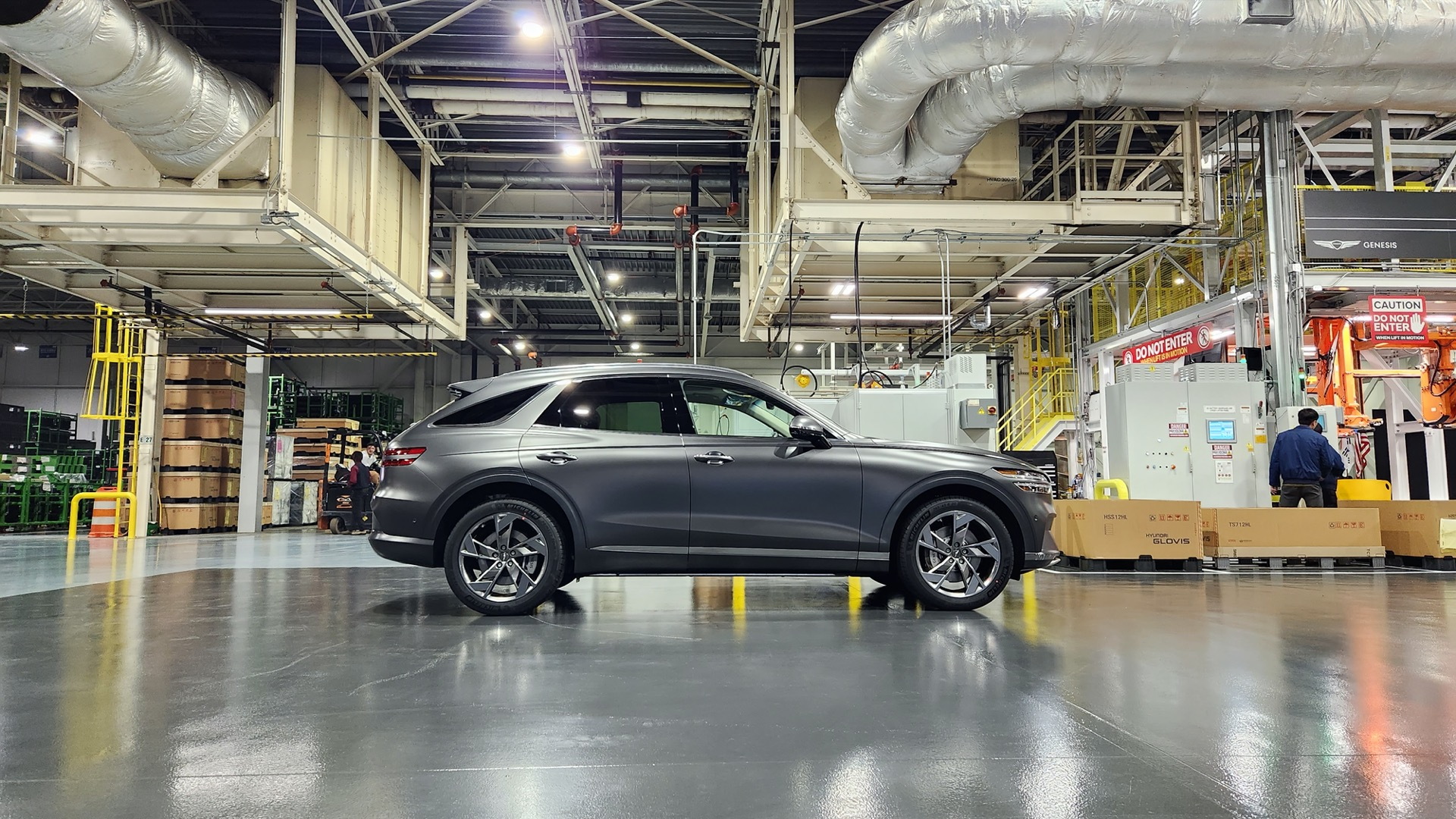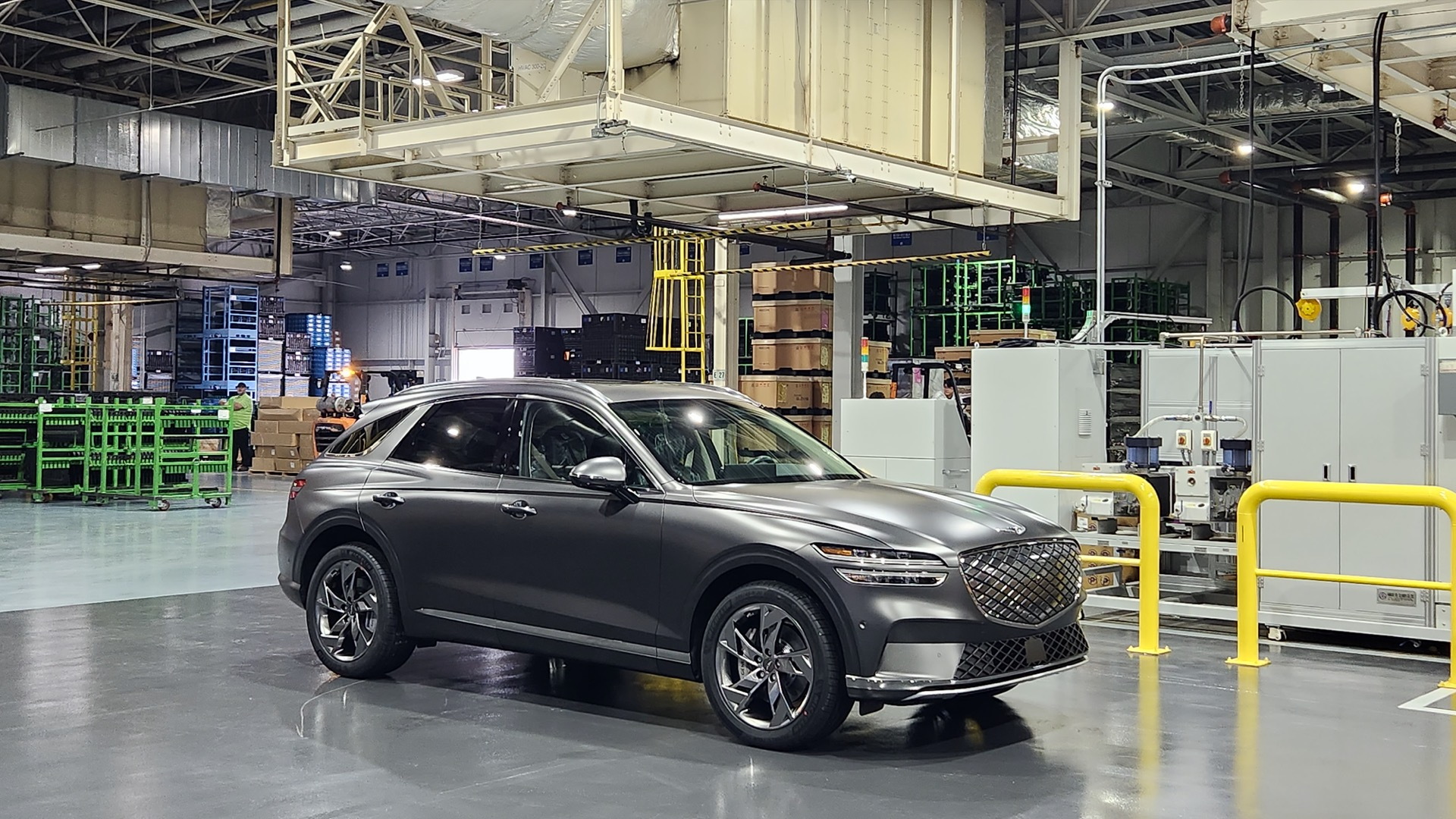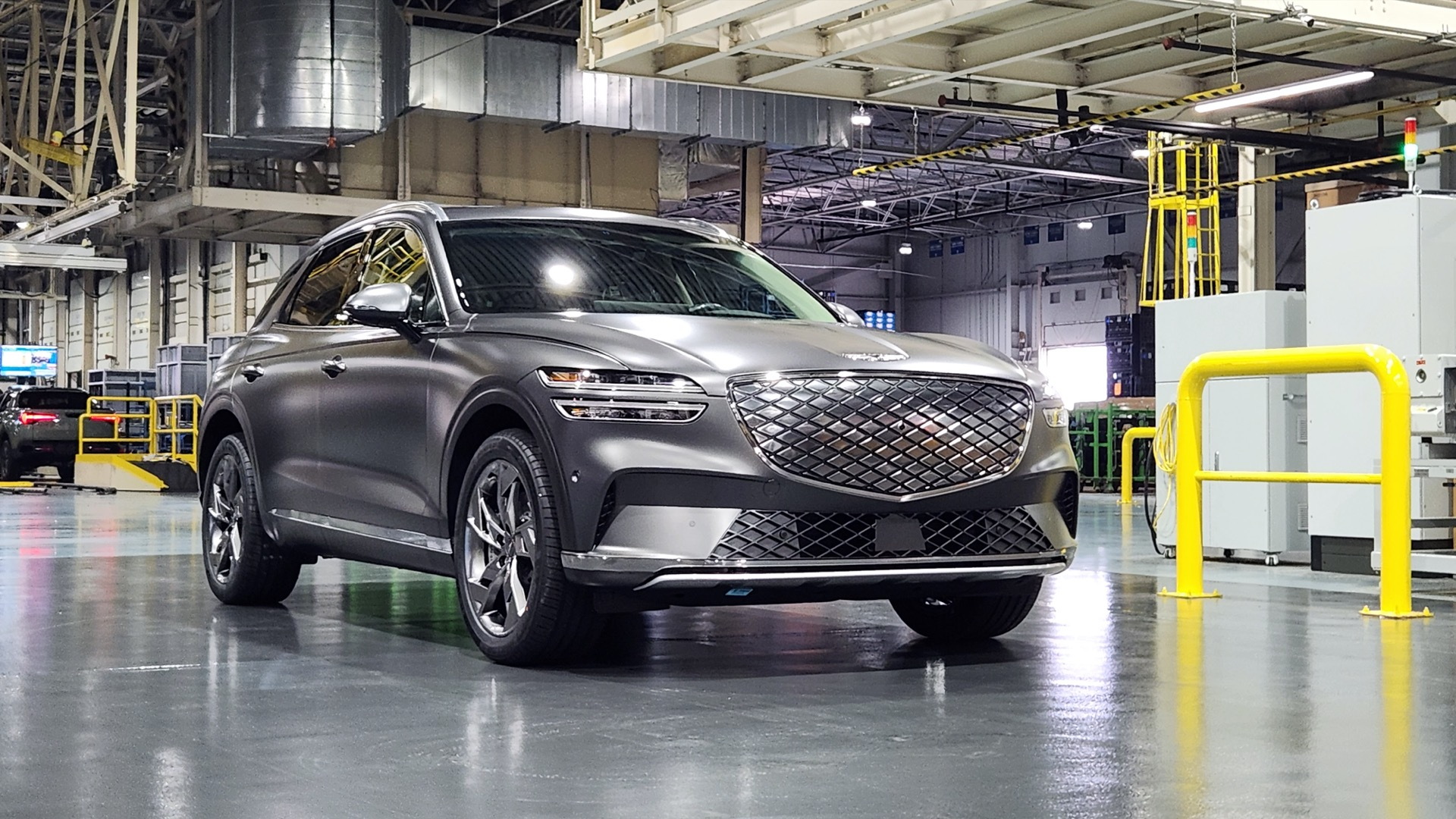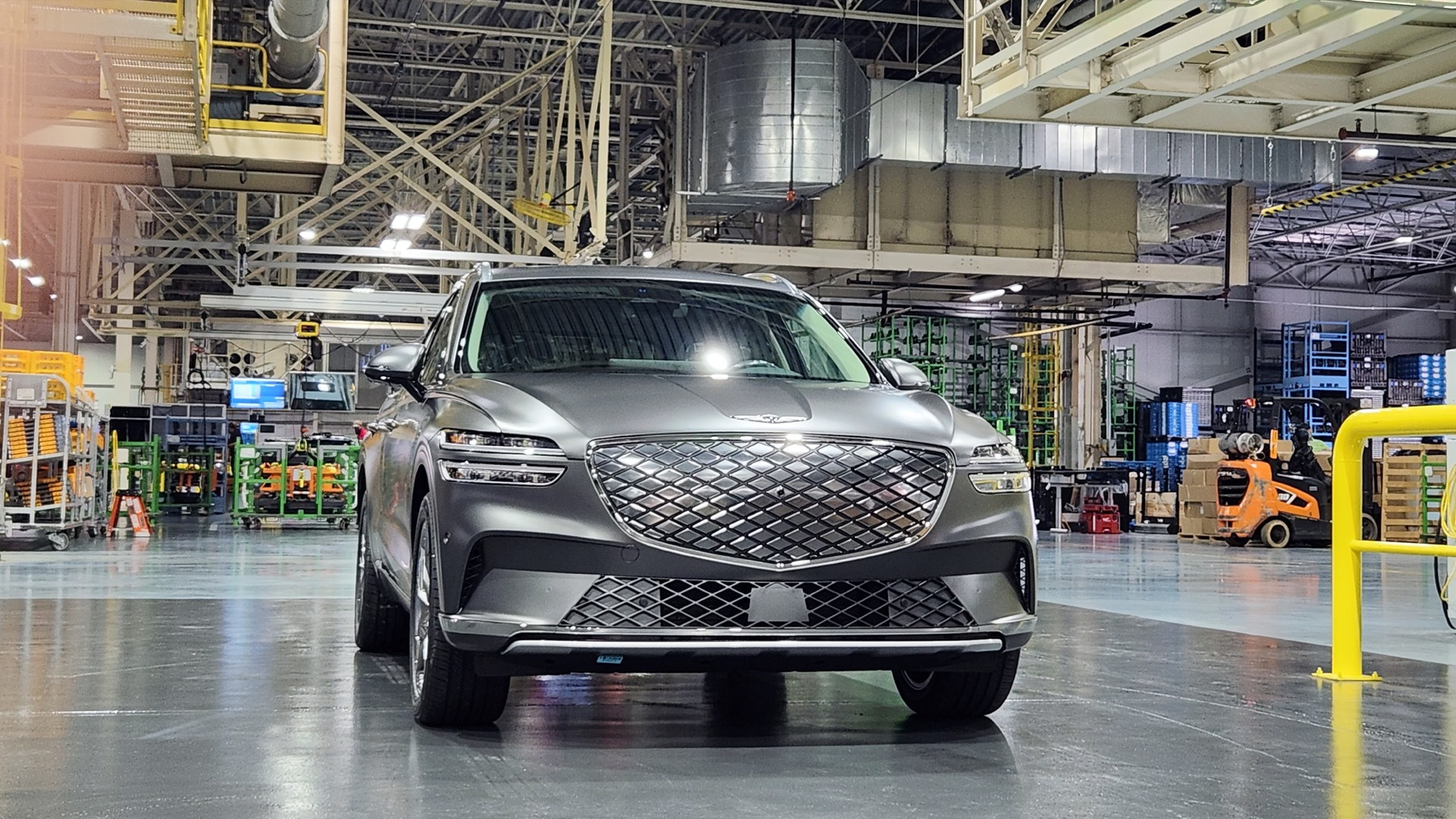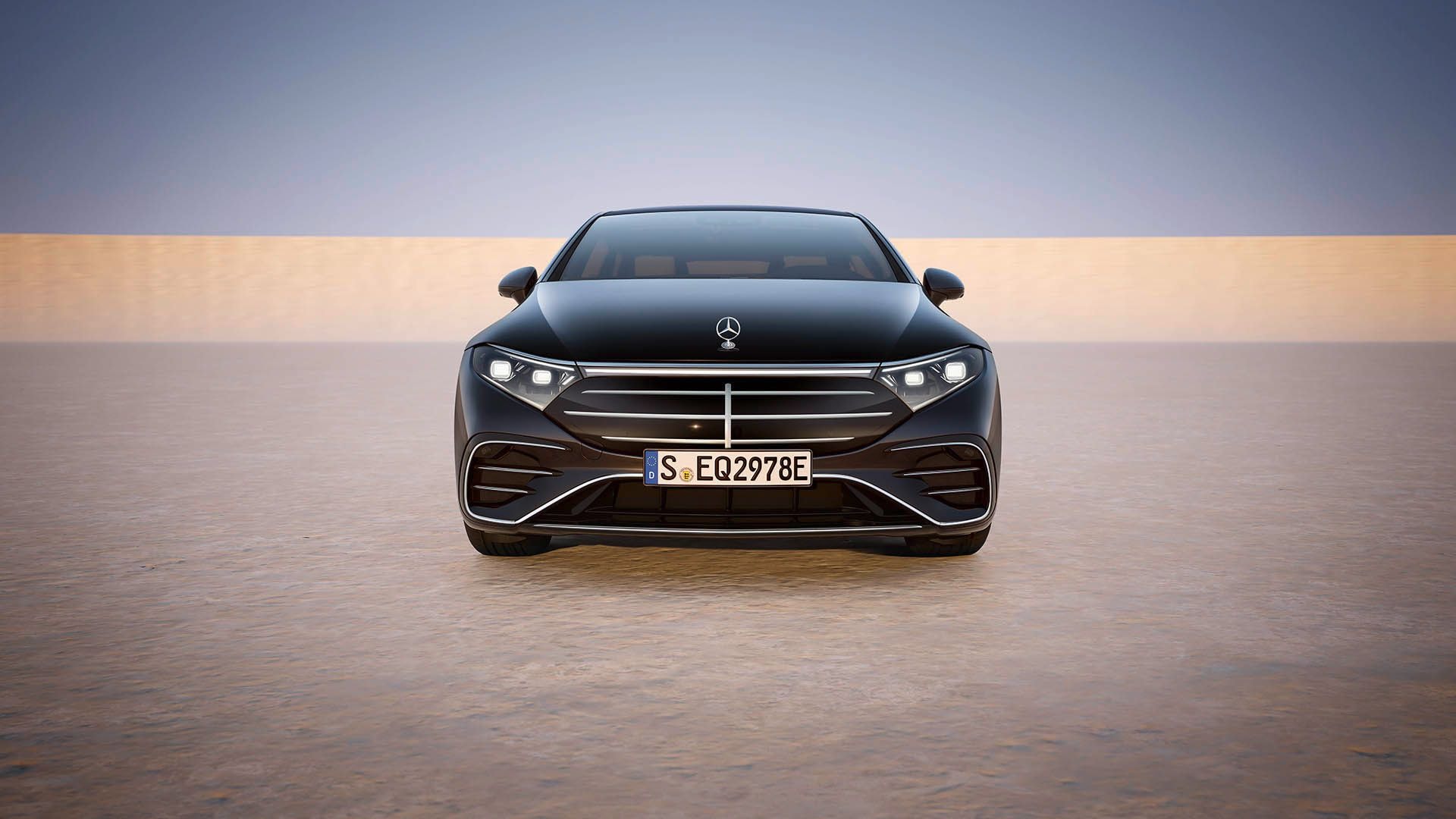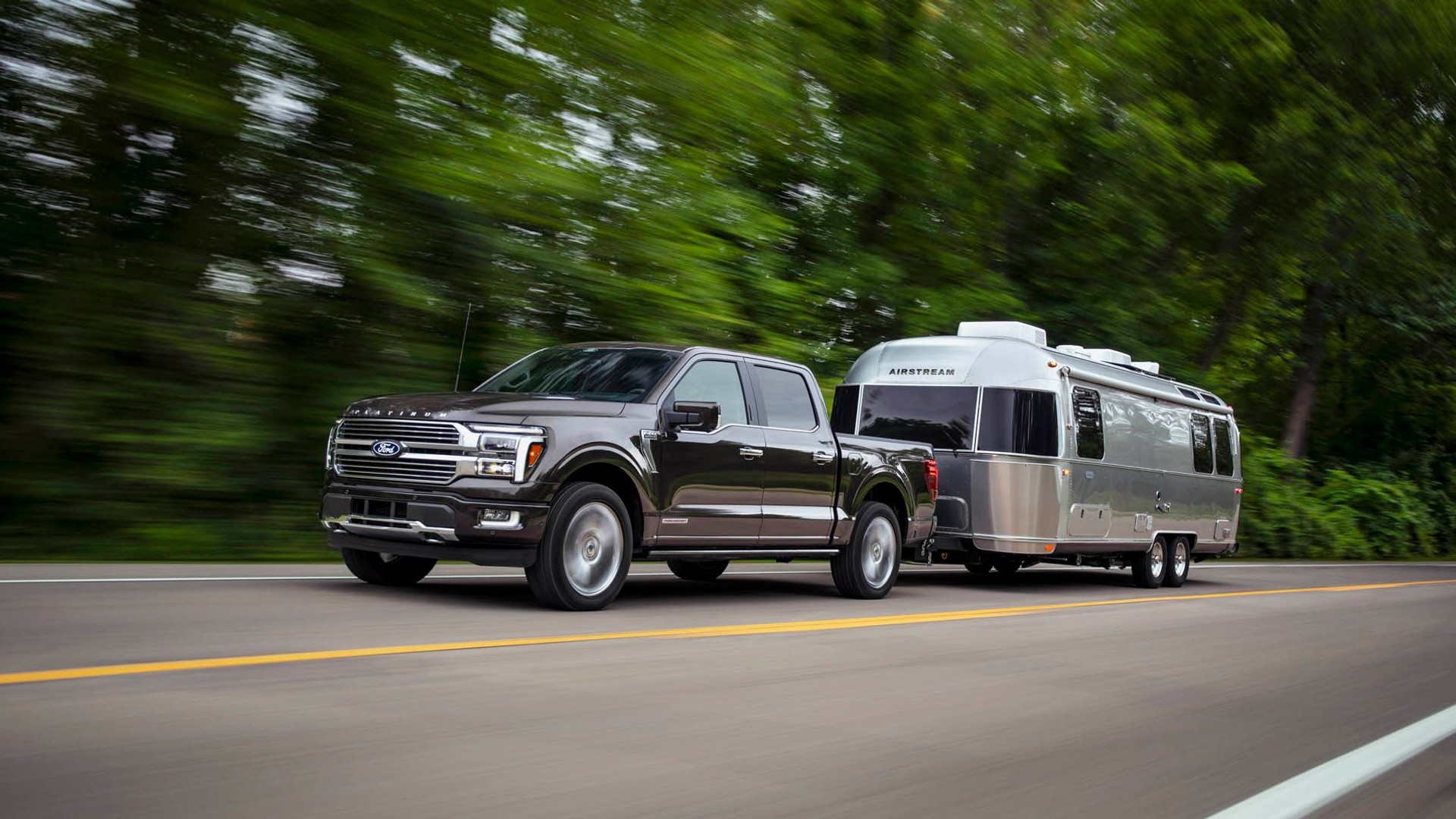As of last month, the 2023 Genesis GV70 is now built in the U.S.—but only in one of its variants, a new battery-electric version dubbed Electrified GV70.
Behind that debut lies a story. When President Joe Biden signed the Inflation Reduction Act last August, building EVs in the United States became far more important than it was the day before. That’s because one provision in the sprawling industrial-policy bill restricted purchase incentives for new battery-electric and plug-in hybrid vehicles to those models assembled in the United States.
At the time, the list of battery-electric vehicles meeting that requirement was short: the Chevrolet Bolt EV and EUV, Ford F-150 Lightning, GMC Hummer EV, Nissan Leaf, and all four Tesla models (Model S, Model X, Model 3, and Model Y). Since then, the list has expanded to include the Cadillac Lyriq and Volkswagen ID.4.
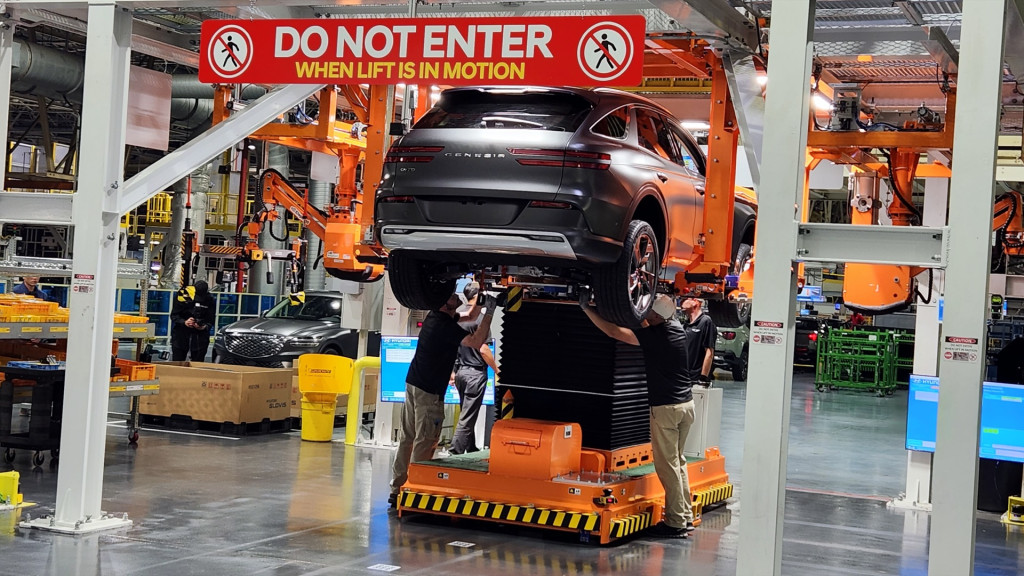
U.S. production of Genesis Electrified GV70 in Alabama
That’s how I found myself in Montgomery, Alabama, in February, watching a set of electric automated guided vehicles maneuver a Genesis GV70 crossover into position and slowly hoist the truck seven feet into the air. A separate robot vehicle then rolled a battery pack into position underneath the newly built SUV and lifted it into place.
Once the heavy pack was in position, a team of experienced plant technicians from the “Genesis Multi-Function Team” swarmed under the vehicle. They bolted the pack into place and connected its high-voltage cables, liquid cooling pipes, and more. After following the vehicle through its production process, their last step was to test charging before the new GV70 Electrified rejoined the rest of the cars built on the same line and waited for a test driver.
The battery-insertion demonstration and the ensuing speeches by company employees and local, state, and national politicians were dubbed the “Electrified GV70 Celebration Event.” The goal was to show that Hyundai’s large plant in Montgomery, opened in December 2005, was now building an EV along with hundreds of thousands of internal combustion models a year.
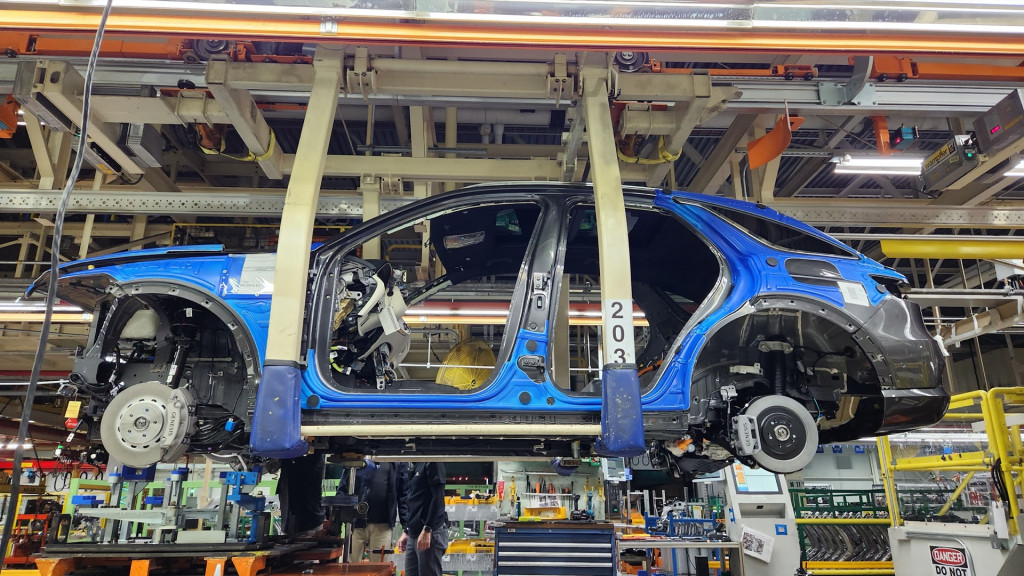
U.S. production of Genesis Electrified GV70 in Alabama

U.S. production of Genesis Electrified GV70 in Alabama
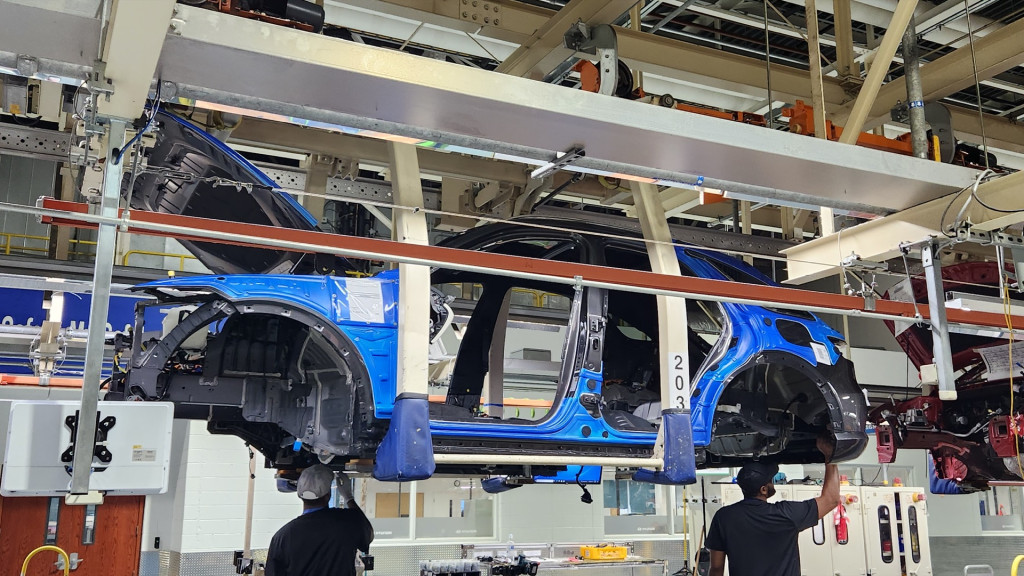
U.S. production of Genesis Electrified GV70 in Alabama
Ramping up for U.S.-built EVs
The plant at present builds the Elantra compact sedan, Tucson compact crossover, Santa Fe mid-size crossover, Sonata sedan, and Santa Cruz pickup truck.
The Genesis Electrified GV70 is a battery-powered version of its well-reviewed and successful GV70 compact crossover, on sale in the U.S. for more than a year with a choice of turbo-4 or V-6 gasoline engines. In 2022, the brand sold 19,141 GV70s, and the total would have been higher if U.S. dealers could have gotten more vehicles to meet buyers’ “insatiable appetite” for it, said Ted Mengiste, VP of sales operations for Genesis U.S.
The decision to add GV70 production to Montgomery reportedly came together quickly. Hyundai officials met with state Governor Kay Ivey only in March 2022, the deal was announced the next month, and early vehicles rolled off the lines nine months later.
That made Montgomery not only the first non-Korean Genesis plant, but the company’s first in the U.S. to build battery-electric vehicles (though it was already building plug-in hybrid versions of the Tucson and Santa Fe). A month after the Alabama announcement, Hyundai said it would build an entirely new U.S. plant in Georgia, to assemble up to 300,000 EVs a year. The passage of the IRA appears to have accelerated those plans with a potential expansion to 500,000 units a year and the possibility of Genesis EVs from that plant, too.
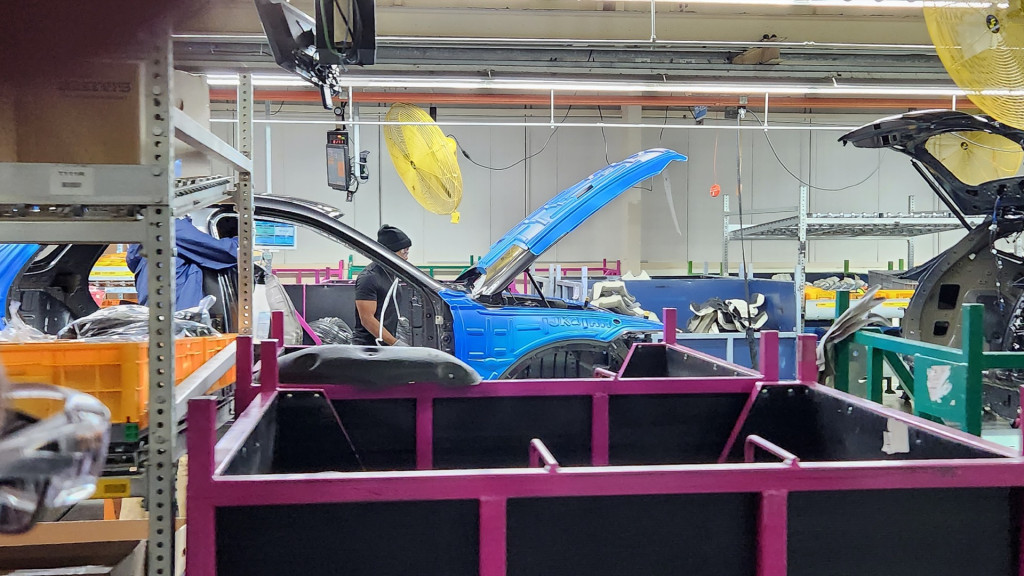
U.S. production of Genesis Electrified GV70 in Alabama
Electric cars and gas models on the same line
The secret to running multiple models interspersed on the same production line is a consistent assembly process, with the same pieces welded together or assembled into the in-process shell at the same points, regardless of whether it’s a simple compact sedan or a luxury SUV. That consistent process lets the plant build not just the GV70 interspersed with the various Hyundai models, but insert the front and rear powertrains into the vehicle in the same spot on the line that the gasoline drivetrains—with front- or all-wheel drive—are lifted up from underneath and bolted into place.
GV70 stampings are brought in and welded together in the same order as those for the Santa Fe, and the completed shell travels along the same line to the same paint shop. Every tenth vehicle on the line might be a GV70—meaning a production rate of six per hour on one shift—according to Robert Burns, vice president and chief administrative officer for Hyundai Motor Manufacturing Inc.
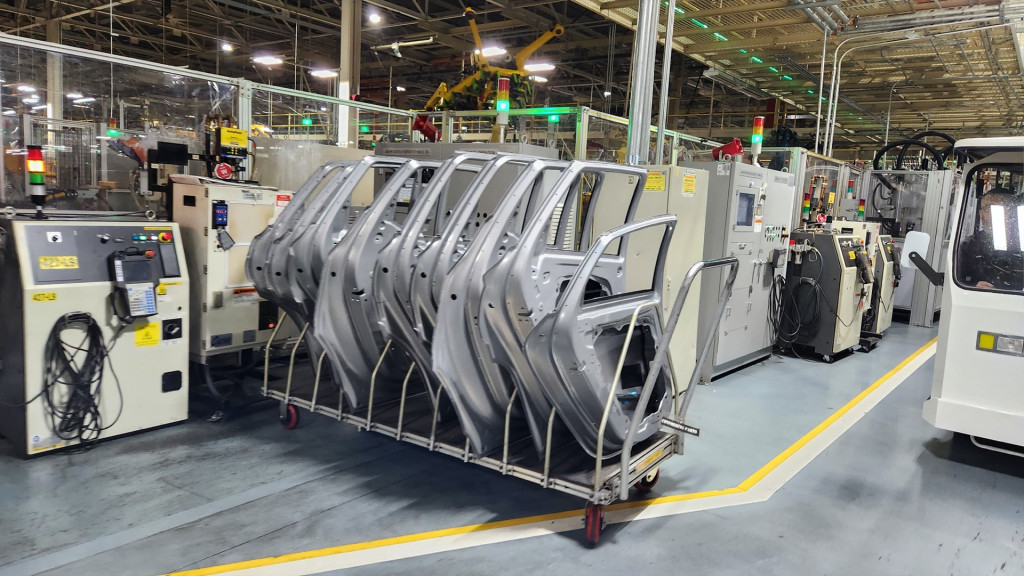
U.S. production of Genesis Electrified GV70 in Alabama
But, Burns told Green Car Reports, the Genesis brand uses a more complex clear-coat paint process than the Hyundai vehicles. To simplify that process, GV70 shells are batched at the entrance to the paint shop, then painted in a group once the Hyundai clear-coat has been swapped out of the paint nozzles and the Genesis ingredients loaded. Then the painted Genesis shells are inserted back into the production sequence in specific positions that correspond to the order of the “kitted” EV running gear and other components queued up for later in the process.
Back on the line, the electric GV70’s bright-orange high-voltage wiring harness is inserted into the vehicle along with the regular harness. Its connectors are in place awaiting the front and rear motors, each with power electronics sitting on top, and they are connected together at the same time the myriad pieces of the regular harness are connected to their various motors, switches, and instruments.
Battery pack marriage: Different than Tesla, for sure
The one piece of assembly that couldn’t be accommodated on a production line built for vehicles with engines was the insertion of the half-ton, several-foot-long battery pack under the cabin floor. All GV70 Electrified models roll off the end of the regular line minus a battery, and hence unable to power themselves.
That’s where the robot carts come in: the electric Genesis SUVs divert into a new area at the end of the line where they’re moved by the AGVs into position under a huge frame. Adjacent to the frame, a collection of electric carts holds fully-charged battery packs comprised of nickel-manganese-cobalt cells provided by battery maker SK On. The GV70 is lifted into the air, the AGV moves a pack underneath it and lifts it into place, and the Multi-Function Team does the bolting, wiring, and connecting from there.
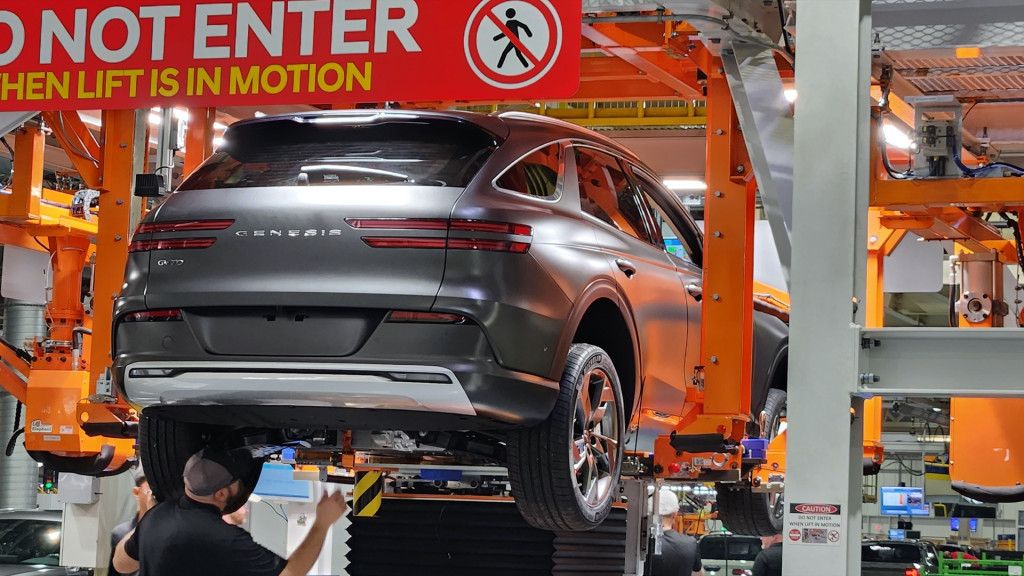
U.S. production of Genesis Electrified GV70 in Alabama
Once the battery has been inserted and connected, and the GV70 lowered back down, the Multi-Function Team members fill the cooling system that keeps the battery and motors at the desired temperature for longest life. They do a quick test of charging and discharging, to ensure all connections are working properly, and then the GV70 Electrified can be driven out of the plant.
Along with all Hyundai models built there, the Genesis then heads onto the two-mile test track where all Montgomery-built vehicles are checked for consistent acceleration, braking, and handling, water-tight seals, suitably low noise level, and a host of other qualities.
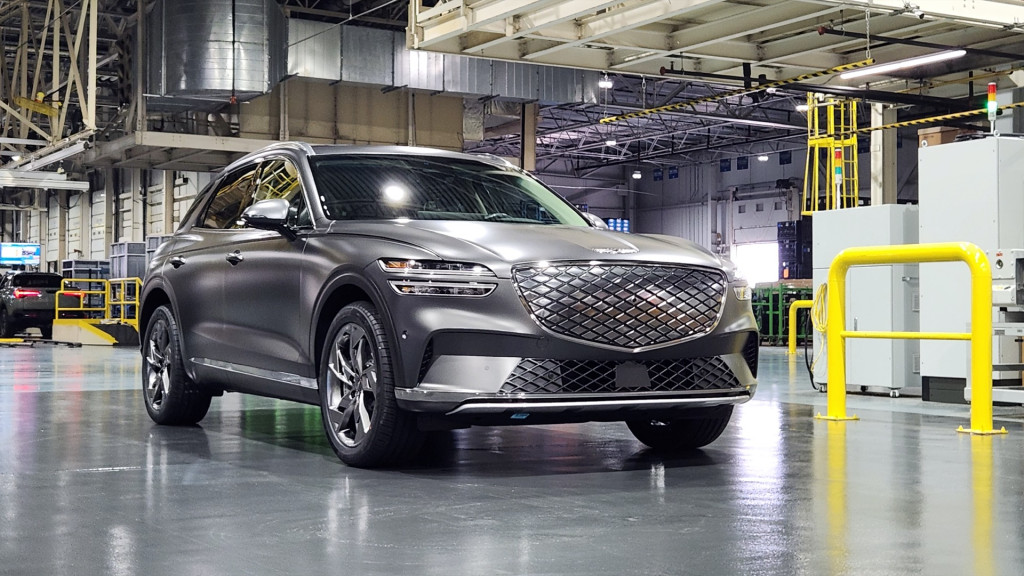
U.S. production of Genesis Electrified GV70 in Alabama
How does the Genesis Electrified GV70 drive?
We had a chance to drive an early production version of the Alabama-built Electrified GV70 for half an hour on several roads and a highway near the assembly plant. The vehicles offered to reporters carried VINs from 000170 to 000230, suggesting they had been built within the few weeks prior. Build quality was excellent, with no observable defects.
The test route was largely straight roads, and the local terrain is almost entirely flat, so we can’t really weigh in on the handling and roadholding. Our brief drive suggested the electric GV70 benefits from the extra weight and lower center of gravity of its battery pack.
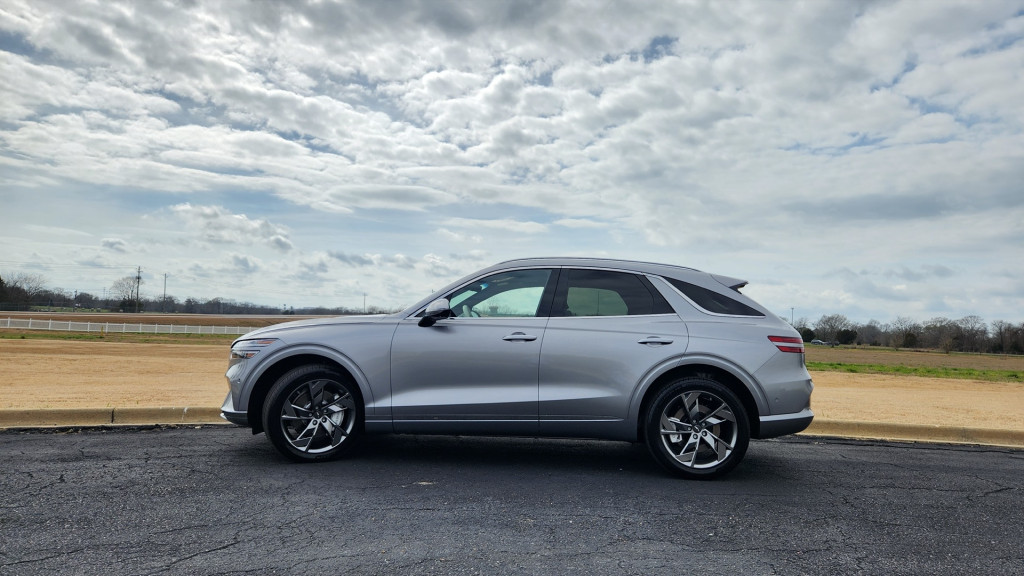
2023 Genesis Electrified GV70
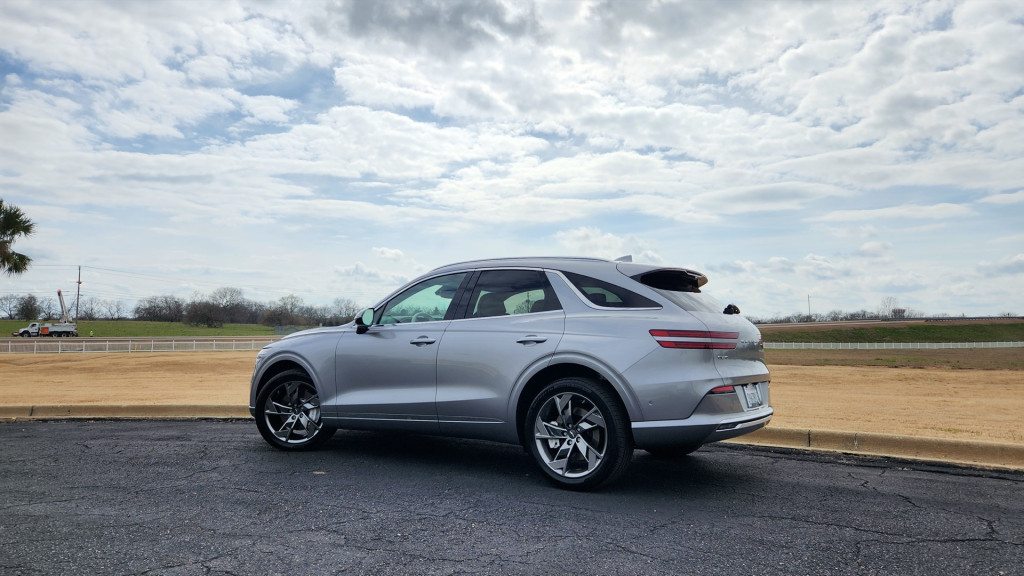
2023 Genesis Electrified GV70
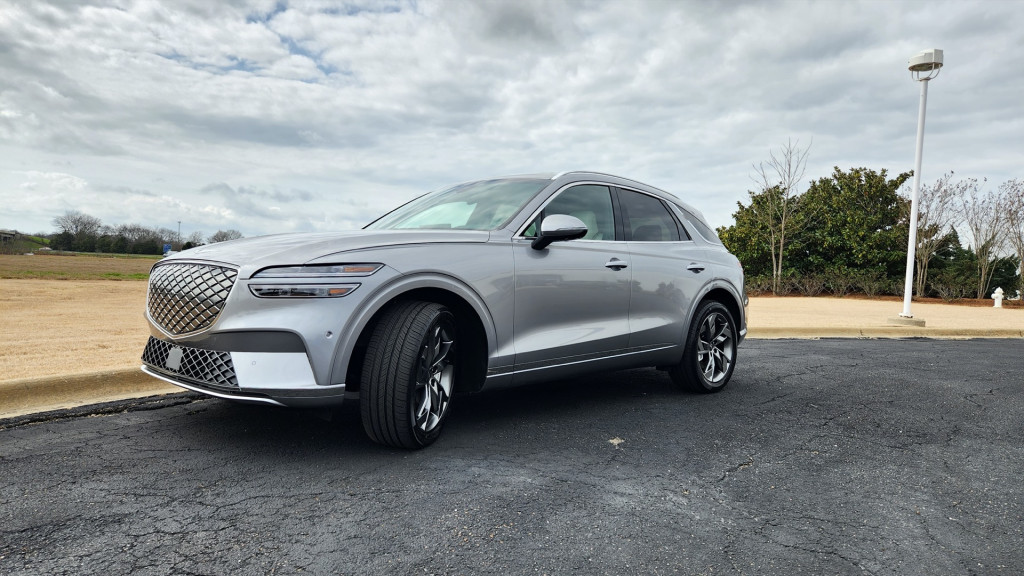
2023 Genesis Electrified GV70
Colleague Marty Padgett attended a later first-drive event; for comprehensive impressions, read his review of the GV70 Electrified, along with the pricing that hadn’t been established at the time of our plant visit.
Like the Electrified G80 sedan that preceded it—and despite the confusing “electrified” moniker, often used for hybrids and plug-in hybrids—the Electrified GV70 is a full battery-electric vehicle. The same 77.4-kilowatt-hour battery pack used in the Ioniq 5 hatchback and the upcoming Ioniq 6 sedan powers a pair of 160-kilowatt motors, one each on the front and rear axles. Total output is 320 kw (429 horsepower) and 516 lb-ft of torque, and a “Boost” function allows the motors to deliver 355 kw (483 hp) for up to 10 seconds via a steering-wheel button. Two trim levels are available: Advanced and Prestige, roughly equivalent to the top two of three trims on the gasoline GV70.
All-electric by 2030
Genesis will sell only battery-electric models by 2030, the brand said in September. Its last new model with gasoline power will arrive in 2025, with a five-year runout before new gasoline vehicles vanish from its showrooms at the turn of the decade.
Alabama-built Electrified GV70 models will start to appear in U.S. buyers’ driveways by the end of March, Hyundai said. Canadian buyers, however, will receive their electric GV70s from the main production line in Ulsan, South Korea—as will the rest of the world’s markets.
Genesis provided airfare, lodging, and meals to enable Green Car Reports to bring you this first-person report.
